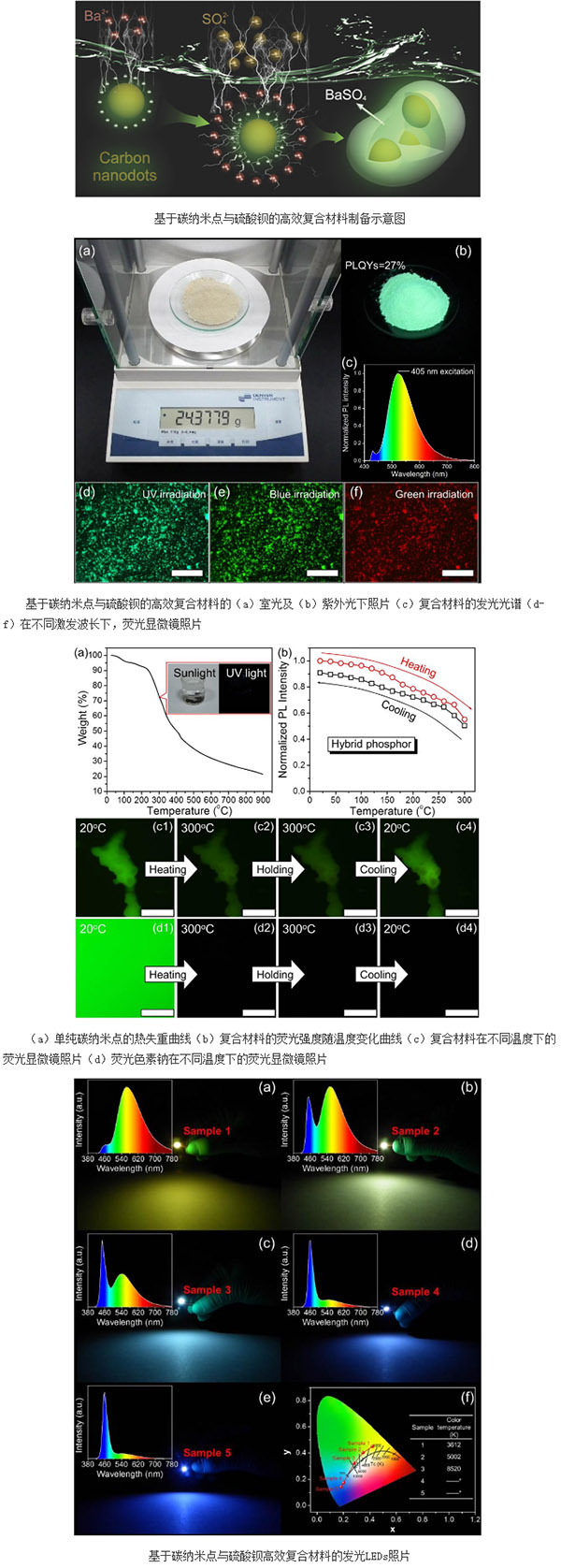Recently, the research team of Changchun Institute of Optics, Fine Mechanics and Physics of the Chinese Academy of Sciences, Qu Songnan’s research group has for the first time developed an ultra-stable, strong-fluorescent composite material based on carbon nanodots. This work utilizes an electrostatically induced self-assembly process that passes through the surface charges of carbon nano-dots. Electrostatic adsorption of ions and in-situ formation of an inorganic coating layer to achieve a carbon nano-dots composite material having ultra-high stability and strong luminescence, has an important application prospect in the development of photovoltaic devices based on carbon nano-dots. The results were published in the international journal Small (Small, DOI: 10.1002/smll.201602055). The first author was Zhou Ding, an assistant researcher. The work was supported by the Young Scientists Project of the Chinese Academy of Sciences, the Talents and Team Project of the Young Scientists and Young Scientists in Jilin Province, and the Major Innovation Projects of the State Key Laboratory of Luminescence and Applications.
Luminescent carbon nanodots are an important class of luminescent materials developed in the last decade. A large number of studies have shown that it has the advantages of good light stability, excellent luminescent properties, low cost of preparation, good biocompatibility, etc., which has caused widespread concern in the world, in the field of bioimaging, sensing, catalysis, laser, and photoelectricity. Potential applications include devices and lighting. However, the application of carbon nanodots in white light illumination has been slow. The main problem is that carbon nanodots have a serious problem of aggregation quenching in the solid state and cannot be used in solid state lighting devices. In response to this problem, the research group adopted a solution for gradually electrostatically adsorbing ions on the carbon nano-dot surface and forming an inorganic coating in-situ. The surface charges of carbon nano-dots are used to gradually electrostatically adsorb cesium ions and sulfate ions. Finally, in situ formation of a strong fluorescence composite of barium sulfate coated carbon nano-dots (fluorescence quantum efficiency 27%). The composite material can maintain more than 90% of fluorescent properties after being treated at 300°C, and is stable in strong acids, strong bases, and organic solvents. Based on this excellent stability and strong fluorescence properties, the composite material can be used as a color conversion layer in light emitting diode lighting (LEDs), and white LEDs with different color temperatures can be achieved by adjusting the proportion of the composite material.

The Butyl Putty Tape (butyl sealant tape) is a double sided no hardening, butyl based sealant tape. It has an aggressive surface tack and high tensile strength. It no need of a primer. It is ideal for the joining and sealing together of a variety of other surfaces including polyethylene, polypropylene , PVC, Concrete, metal, glass, wood and cadwelds.
The butyl putty tape (butyl sealant tape) is a 100% solids butyl rubber filler tape, it is a double sided Butyl Tape.
Butyl Putty Tape
Butyl Mastic Tape,Filler Mastic Tape,Butyl Tape,Butyl Putty Tape
Jining xunda pipe coating materials co., ltd. , https://www.pipeanticorrosion.com